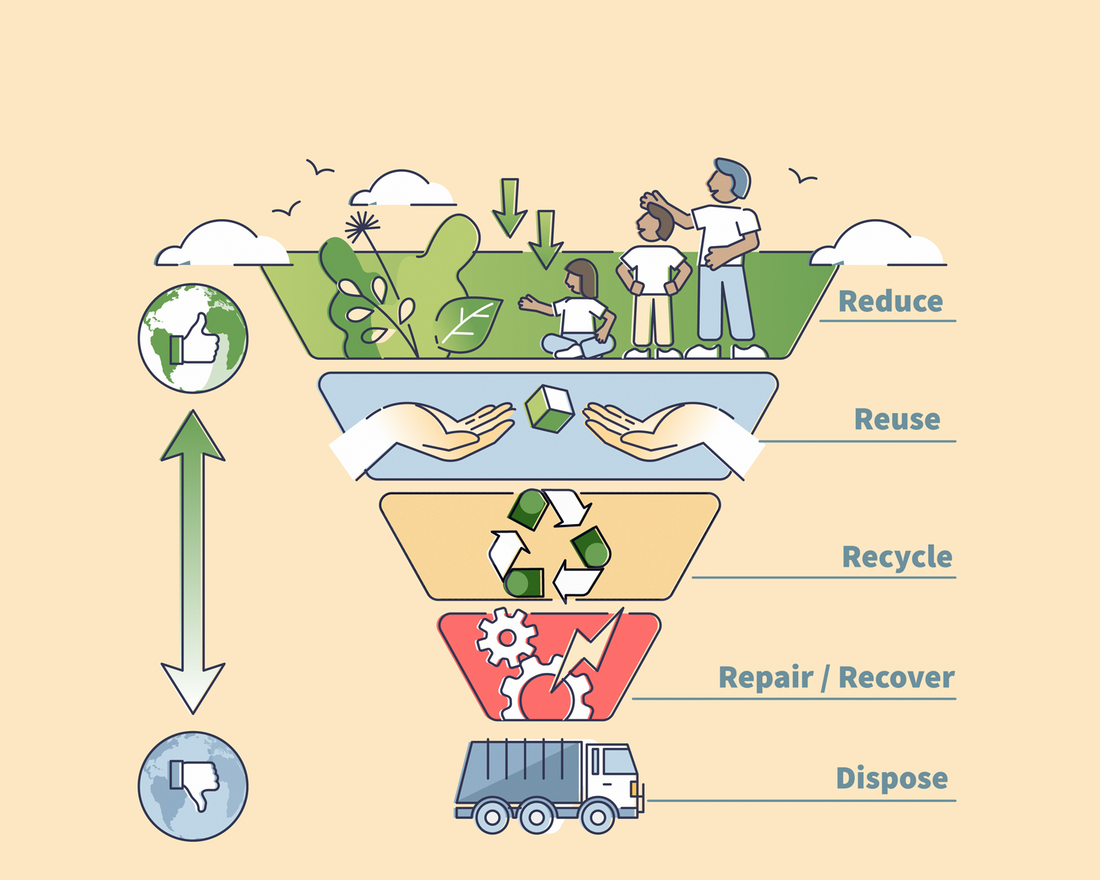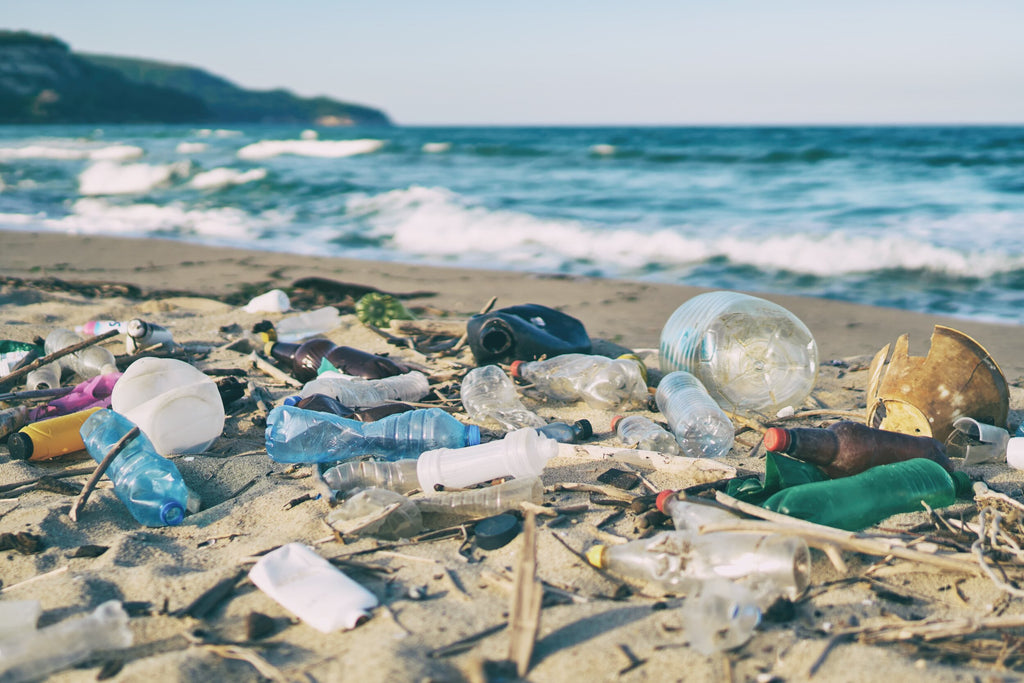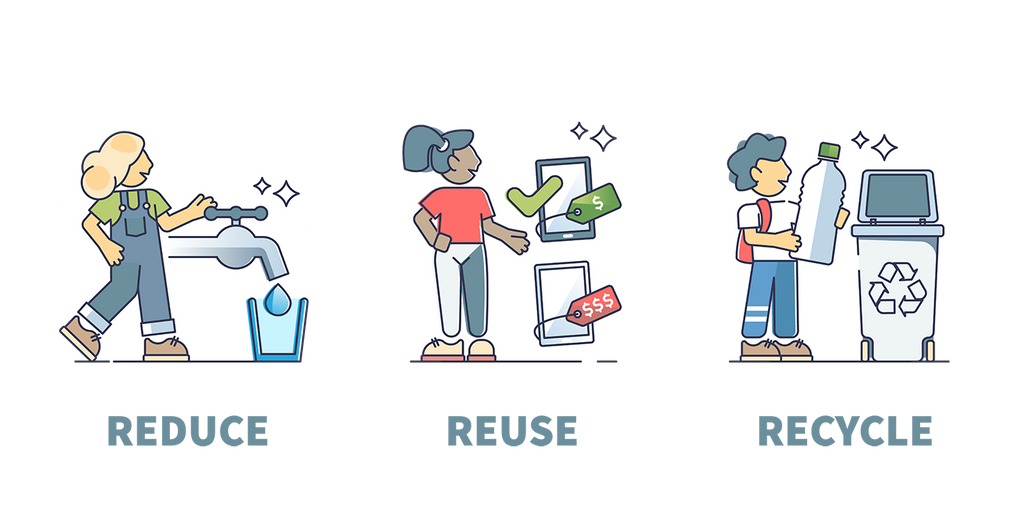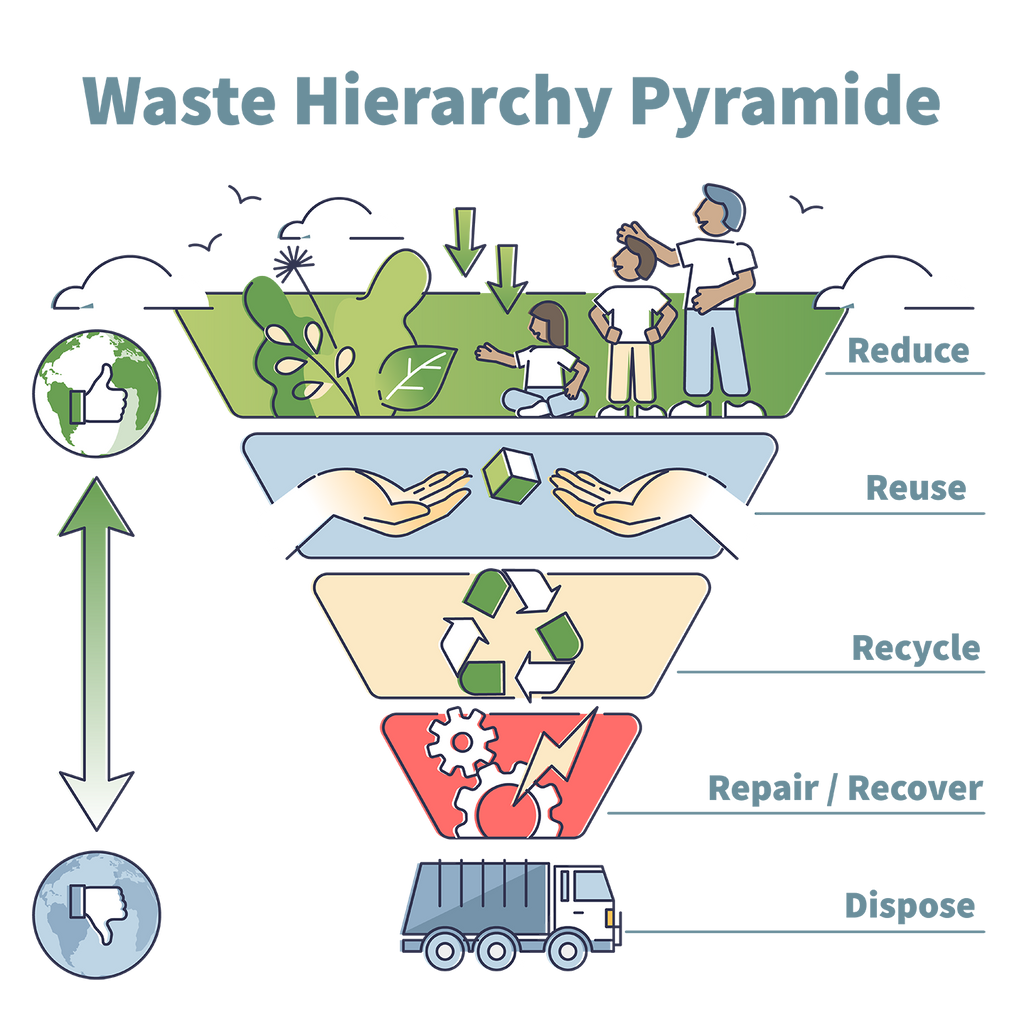
What is the pyramid of sustainability? The Waste Hierarchy Pyramide explained.
Share
Are you tired of the never-ending cycle of consumption and waste? Do you ever wonder if there's a better way to manage our resources? Well, look no further! In today's blog post, we're going to dive deep into the concept of sustainability and explore the Waste Hierarchy Pyramid. Get ready to discover how this pyramid can revolutionize the way we think about reducing, reusing, recycling, recovering, and disposing of our bathroom waste. So buckle up and get ready for an eye-opening journey towards a greener future!

How we consume stuff today?
It's no secret that our modern society is driven by consumption. Everywhere you look, there are advertisements enticing us to buy the latest gadgets, fashion trends, and other products promising to make our lives better. We've become a culture of constant acquisition, always seeking the next big thing.
With the rise of fast fashion and disposable goods, it's easier than ever to buy something new rather than repair or reuse what we already have. This leads to a staggering amount of waste being generated every day. According to the Environmental Protection Agency (EPA), in 2018 alone, Americans generated over 292 million tons of municipal solid waste!
Our throwaway mentality has serious consequences for the environment. The extraction and production processes required to meet our insatiable demand for goods contribute significantly to greenhouse gas emissions and depletion of natural resources.
In addition, many products end up in landfills where they release harmful chemicals into the soil and waterways as they break down over time.
It's clear that we need a more sustainable approach to consumption if we want to preserve our planet for future generations. Thankfully, there is a solution: The Waste Hierarchy Pyramid.
By following this pyramid model - reduce, reuse, recycle, recover, and dispose - we can prioritize actions that have the greatest environmental benefit. Instead of mindlessly buying new things without considering their impact on the planet, we can focus on reducing our overall consumption.
This means questioning whether we really need something before making a purchase and opting for durable goods that will last longer instead of disposable ones. Reusing items whenever possible also helps minimize waste generation.
When it comes time to dispose of an item, recycling should be considered as a way to divert materials from landfills and conserve resources through reprocessing them into new products.
Finally - recovering energy from waste through methods like composting or using it as fuel can further reduce environmental impacts while providing alternative sources of energy.
Adopting an integrated approach to the waste problem in our everyday

The Waste Hierarchy Pyramide explained.
The Waste Hierarchy Pyramid is a framework that guides us in managing waste in the most sustainable way possible. It prioritizes actions based on their environmental impact, from reducing waste generation to disposing of it responsibly.
At the top of the pyramid is "reduce." This means minimizing our consumption and choosing products with less packaging or those made from recycled materials. By being mindful of what we buy and using resources efficiently, we can significantly decrease the amount of waste produced.
Reuse
"Resuse" encourages finding new purposes for items instead of throwing them away. Whether it's repurposing glass jars as storage containers or donating old clothes, reusing allows us to give items a second life and reduce demand for new ones.
Recycle
"Recycle" involves processing materials so they can be used to make new products. Recycling helps conserve natural resources and reduces pollution associated with extracting raw materials. But it's important to remember that not all materials are easily recyclable, so proper sorting is crucial.
Recover
"Recover" refers to energy recovery through processes like incineration or anaerobic digestion, where waste is transformed into heat, electricity, or biogas. While this may not be as environmentally preferable as other options higher up the pyramid, recovering energy from waste can help offset fossil fuel use.
Dispose
At the bottom of the pyramid is "dispose." When all other options have been exhausted, responsible disposal becomes necessary. This means ensuring proper containment and treatment methods are used when dealing with non-recyclable and hazardous waste.
By following this hierarchy and adopting an integrated approach to managing our bathroom waste problem – such as implementing recycling bins for plastic bottles or opting for refillable toiletry containers – we can move towards a more sustainable future where reduce,reuse , recycle,recover,and dispose become everyday habits rather than afterthoughts

An integrated approach to bathroom waste problem
An integrated approach to bathroom waste problem
In today's world, it is crucial that we adopt a more sustainable lifestyle and take responsibility for our actions. This includes being mindful of how we consume and dispose of items, especially in the bathroom.
To tackle the issue of bathroom waste, it is essential to follow the principles of the Waste Hierarchy Pyramid: reduce, reuse, recycle, recover, and dispose. By implementing these steps in our daily routines, we can make a significant impact on reducing waste and preserving our environment.

Let's focus on reducing waste. We can do this by being conscious consumers and only purchasing what we truly need. Avoiding single-use products like plastic toothbrushes or razors or disposable wipes can significantly decrease the amount of waste generated in your bathroom, go for our reusable SeaDifferently toothbrush and subscribe to get your refills delivered on a regular basis.
Next comes reusing items whenever possible. Consider using refillable containers for your toiletries instead of buying new ones every time they run out. Additionally, invest in reusable alternatives such as washable cotton pads or cloth towels instead of disposable options.
Recycling plays a vital role in minimizing environmental impact. Make sure to properly separate recyclable materials like glass bottles or cardboard packaging from general trash. Check with your local recycling facilities for guidelines on what can be recycled in your area.
Recovery involves finding alternative methods to deal with waste that cannot be reduced or recycled directly. For example, some communities have programs where personal care product packaging can be sent back to manufacturers for proper disposal or repurposing.
Lastly comes disposal - but even here there are ways to minimize harm to the environment. Look into eco-friendly options such as composting biodegradable items like natural loofahs or wooden floss rather than sending them straight to landfill.

By following this integrated approach towards managing bathroom waste, not only will you contribute towards sustainability efforts but also inspire others around you to do the same! Small changes made collectively have immense power when it comes to creating a greener, more sustainable future.
Remember, it's up to each one of us.
